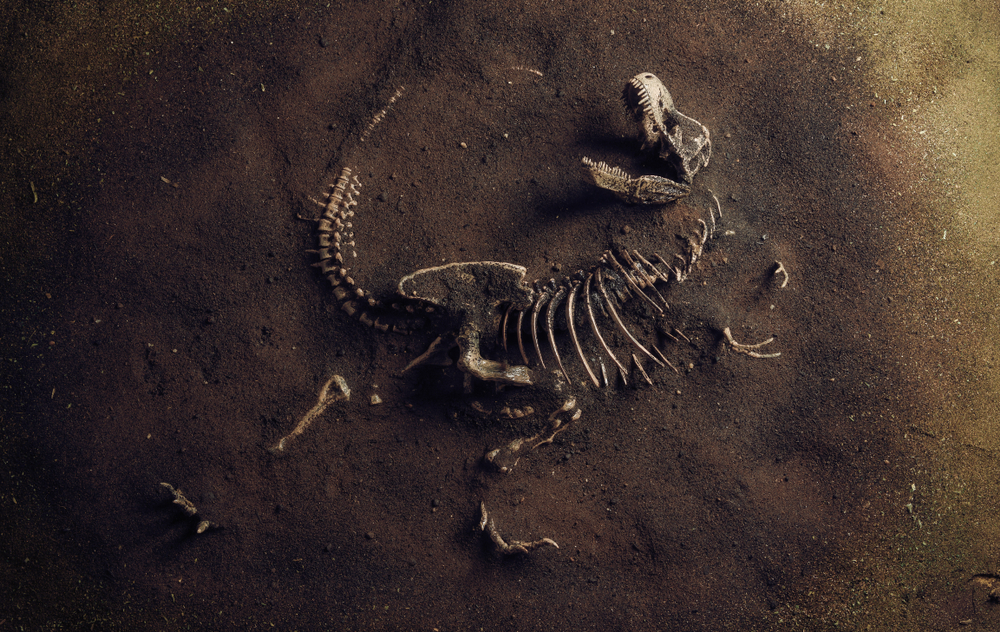

Senior Pastor of Sound of Heaven
QUICK ANSWER- YES! Dinosaurs, also known as Behemoth, are mentioned and described in the Bible.
The intersection of science and faith has always been a subject of intrigue and discussion. Often, we tend to juxtapose these two concepts, viewing them as opposing entities. However, there are times when they intertwine in ways that make us question our preconceived notions. One such fascinating area of discussion is the potential existence of dinosaurs in the Bible.
The Bible, a cornerstone of faith for millions, is often viewed through a purely spiritual lens. Yet, there are passages within its verses that, when viewed from a different perspective, seem to allude to creatures that closely resemble the prehistoric giants we know as dinosaurs. Does this mean dinosaurs feature in the holy scriptures? Can the words of the Bible provide insight into a time when these incredible creatures roamed the earth?
This blog seeks to explore these questions, delving into biblical passages and analyzing them not just from a Biblical perspective but from a scientific and historical perspective as well.
So, journey with us as we attempt to unveil this enigma. Were there dinosaurs in the Bible? Let’s delve into the verses, examine the scriptures and different interpretations, and see if we can find traces of these ancient creatures in the sacred text.
The first biblical passage which is often cited as evidence of dinosaurs is found in the Book of Job, chapter 40, where a creature named “Behemoth” is described. Job 40:15-18 states: “Look at Behemoth, which I made along with you and which feeds on grass like an ox. What strength it has in its loins, what power in the muscles of its belly! Its tail sways like a cedar; the sinews of its thighs are close-knit. Its bones are tubes of bronze, its limbs like rods of iron.” The description of the Behemoth’s tail swaying like a cedar, its powerful limbs and sizable stature, leads some to believe that this could be a description of a dinosaur-like creature.
Next, we find another intriguing reference in the Book of Job, chapter 41, describing a creature named “Leviathan”. Job 41:1-2 states: “Can you pull in Leviathan with a fishhook or tie down its tongue with a rope? Can you put a cord through its nose or pierce its jaw with a hook?” Further descriptions depict Leviathan as a mighty creature that no human could tame, with a hide tough and impenetrable. Some consider the Leviathan to be a water-dwelling dinosaur or maybe a fire-breathing dragon, given its description in verses 18-21.
The Book of Genesis also offers a possible reference to dinosaurs. Genesis 1:21 says, “So God created the great creatures of the sea and every living thing with which the water teems and that moves about in it, according to their kinds, and every winged bird according to its kind.” The phrase “great creatures” is translated from the Hebrew word “tannin,” which can be interpreted as “sea monsters” or “dragons”. Some suggest this could refer to aquatic dinosaurs or plesiosaurs.
Finally, the Psalms also briefly touch on powerful creatures. In Psalms 74:14, it states, “It was you who crushed the heads of Leviathan and gave it as food to the creatures of the desert.” This passage could be a metaphorical reference, but some interpret it as another mention of a dinosaur-like creature, reinforcing the potential existence of such beings in biblical times. It’s essential to note, however, that these interpretations are speculative and not universally accepted.
The interpretations of these aforementioned scriptures vary widely, spawning numerous theories around the supposed mention of dinosaurs in the Bible. Among believers, some assert that these passages indeed describe ancient beasts akin to what we now know as dinosaurs. They argue that the detailed descriptions of “Behemoth” and “Leviathan” in the Book of Job could be the Bible’s way of recording the existence of dinosaurs. This perspective is common among Young Earth Creationists who believe in a literal interpretation of the Genesis creation narrative, that the Earth is around 6,000 years old, and humans cohabited Earth with these colossal creatures.
Contrarily, there are some who interpret these descriptions metaphorically rather than literally. According to them, the creatures mentioned in these verses aren’t dinosaurs but symbols of strength, power, and mystery, used to communicate a specific message or lesson. They argue that the Bible frequently uses metaphoric language and these instances are no exception. For example, the Leviathan could represent insurmountable challenges or powerful forces of evil, while the Behemoth might symbolize impenetrable strength or immense power that is beyond human control.
Additionally, another interpretation posits that the “Behemoth” and “Leviathan” could be references to known yet extraordinary creatures, not dinosaurs. For instance, some suggest that the “Behemoth” may have been a hippopotamus or an elephant, as these animals fit much of the given description. Similarly, the “Leviathan” is considered by some scholars to be an allusion to a crocodile. These interpretations align with the belief that the Bible is not a natural history textbook but a spiritual guide.
However, skeptics view these theories with a critical eye, emphasizing what they deem as a “lack of definitive archaeological evidence” linking dinosaurs with the depicted timeline of biblical events. They argue that such interpretations stretch the biblical text beyond its contextual and historical meanings to support predetermined beliefs. In the end, while these theories provide intriguing perspectives, it’s essential to remember that none offer definitive proof and remain speculative in nature. The existence of dinosaurs in the Bible, thus, continues to remain an enigma, sparking curiosity and fostering intriguing discussions at the juncture of science and faith.

As we delve into the realm of history and archaeology, there have been several intriguing discoveries that hint towards the possibility of humans and dinosaurs coexisting. For instance, the Ica stones, a collection of andesite stones found in Ica Province, Peru, have garnered much attention. These stones, engraved with a variety of images including dinosaurs, have sparked a flurry of debate. Supporters of the theory that man coexisted with dinosaurs view these stones as compelling evidence. They argue that the accurate depiction of dinosaurs on these stones could only have been possible if the artist had seen these creatures firsthand.
In addition to the Ica stones, another interesting discovery is the Acámbaro figures, a collection of more than 30,000 ceramic figurines unearthed in Acámbaro, Mexico. This collection includes representations of humans interacting with dinosaur-like creatures. Critics, however, question the authenticity of these artifacts, citing the lack of documentation of the original excavation and the possibility of modern influences on the artist.
Furthermore, there have been controversies over dinosaur footprints found alongside human footprints in places like the Paluxy River in Texas. Some creationists argue that these tracks suggest that humans and dinosaurs must have lived during the same period. However, these claims are being disputed by mainstream scientists, attributing the human-like footprints to erosion or misinterpretation of dinosaur tracks. While these archaeological findings are certainly intriguing, they are often met with skepticism and controversy within the scientific community. As such, they serve to fuel the debate rather than provide definitive evidence that humans and dinosaurs coexisted.
There are theories that propose the dinosaur-like creatures mentioned in the Bible, specifically the “Behemoth” and “Leviathan”, are not literal animals but symbolize spiritual truths or metaphysical entities. This interpretation asserts that these creatures are metaphors for evil forces or obstacles that humans must overcome in their spiritual journey. In this context, the “Leviathan” could represent a form of chaos or evil that needs to be subdued, whereas the “Behemoth” might represent an insurmountable challenge or a seemingly unbeatable force that must be tackled with faith and resilience. This perspective aligns with the broader biblical theme of triumph over adversities and the subsequent spiritual growth.
Another symbolic interpretation proposes that these creatures represent certain aspects of God’s power and majesty. In this viewpoint, the “Behemoth” and “Leviathan” are symbols of God’s unrivaled power and creative prowess. The depiction of these creatures’ strength and enormity serves to underscore God’s dominion over all creation, conveying the message that nothing is beyond God’s control. This interpretation aims to inspire awe and reverence towards God, highlighting His supremacy and the infiniteness of His power.
A different interpretation suggests that these creatures symbolize larger-than-life forces of nature, such as natural disasters or extreme weather events. The “Behemoth” could represent the earth’s unyielding terrain and its inherent dangers, while the “Leviathan” could symbolize the unpredictability and ferocity of the sea. This viewpoint is derived from the assumption that the ancient people, while writing the Bible, used these metaphorical creatures to explain and give context to the natural phenomena they didn’t fully understand.
Lastly, there’s an interpretation that suggests that these passages serve as a reminder of human limitations and the mysteries that lie beyond our understanding. The profound descriptions of the “Behemoth” and “Leviathan” and their undefeatable nature could be seen as a metaphor for the mysteries of the universe that remain beyond human comprehension. This interpretation aims to instill humility, urging us to acknowledge the limits of our knowledge and to be open to the vast mysteries that the universe holds.
While we can all see how the metaphorical suggestions above may make sense, they seem to be a bit of a stretch in how the Bible is interpreted. Also, even it is symbolic, the writer would only use symbols that the readers and audience would know and understand.
Yes, there are (in my opinion). The writers of the scriptures would not use something that did not see or know about in relating spiritual truths and prophecies to them. For example, how would Job even know in chapter 40 that Behemoth had a “tail like a cedar” unless he actually saw a creature with a tail like a cedar. With all of this being said, none of us were there but I truly believe that the scales are tilted in the strong favor that these creatures are what we call dinosaurs. (The reason why they aren’t mentioned as dinosaurs is because that word was not invented until 1841)
So, after journeying through the realm of faith, history, and science, we’re left with a fascinating question that continues to stir our curiosity: Could the mysteries of the dinosaur era be hiding in plain sight within our ancient texts, waiting to be fully unveiled? I think so…what say you?
Change your life today by inviting Jesus into your heart. Recite this prayer and make Him the Lord of your life.
Dear Heavenly Father, I come before you today with a humble heart, yearning for your divine wisdom and guidance. I acknowledge the truth of your Holy Word, the Bible, and its transformative power. I stand in awe of its revelations, its teachings, and the living testimony of your love for us. I accept the Bible as the ultimate truth that leads me to you, and I commit to studying it diligently, to understand your will and your ways.
Lord Jesus, I recognize you as my Savior, the one who bore my sins upon the cross so that I may have eternal life. I am in awe of your sacrificial love, your unfathomable grace, and your endless mercy. From this moment forward, Jesus, I declare you as my Lord and Savior. I surrender my life to you, trusting in your promise of salvation and accepting your gift of grace. Lead me, guide me, and mold me according to your will.
Holy Spirit, I invite you into my heart, to dwell within me, to guide my actions, and to be my constant Companion. Empower me to live a life that’s pleasing to you, to be a beacon of your love and grace to those around me. I pray for strength in times of trials, wisdom in moments of uncertainty, and courage to stand firm in my faith. I thank you, God, for your unfailing love and for the promise of eternal life with you. In Jesus’ name, I pray, Amen.
Take a look below about this powerful seminar on Dinosaurs in the Bible presented by Dr Kent Hovind. Dr Hovind goes through some incredible Biblical, historical and Archaeological evidence that supports Dinosaurs in the scriptures.
You can also check out this article that Pastor Jason wrote on the term “What Is Behemoth in the Bible.”
© Sound of Heaven Church 2011- 2024